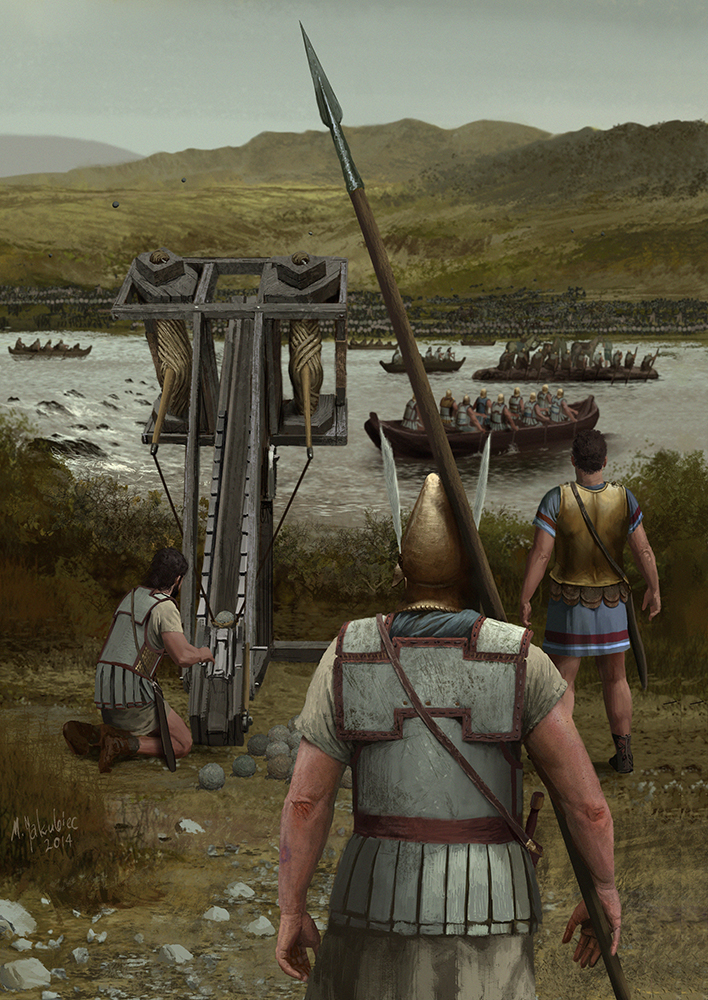
Comms Station
Visible in the left portion of the illustration is a Greek version of an Ancient communications station. The problem of relaying information over long distances otherwise difficult to traverse, particularily in time sensitive circumstances, was solved by combining writing and spring technology. Messages were written on round rocks, which were then catapulted using a sling-type device called a Broadcast Station (not to be confused with a catapult - a crude Ancient version of artillery). The crew consisted of a sender, who's job was to send messages, a spotter, tasked with spotting and recovering the messages sent by other stations and scribe - the writer/reader of messages. By using multiple stations, spaced accordingly and forming lines, it was possible to send messages over long distances very efficiently. The system was not perfect, which resulted in many tragic (sometimes ironically comical) stories. Chronicles describe a case of one Akakios, a Macedonian merchant, who was informed of his exoneration in a recent court decision, however the stone carrying the happy message struck him in the head, tragically killing him. Another such tale describes a talented dancer, known by the name Tychon, whose leg was crushed by a message stone. Looking down at his shattered limb, Tychon realised in horror that the message informed him that his recent application for a coveted role in a dancing show was successful.